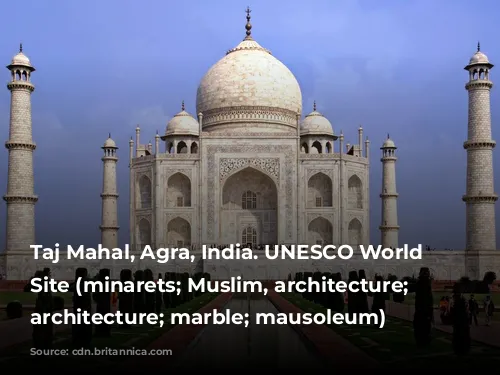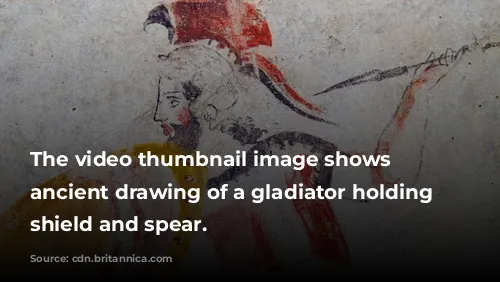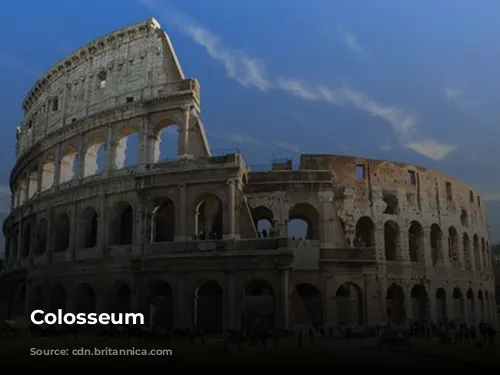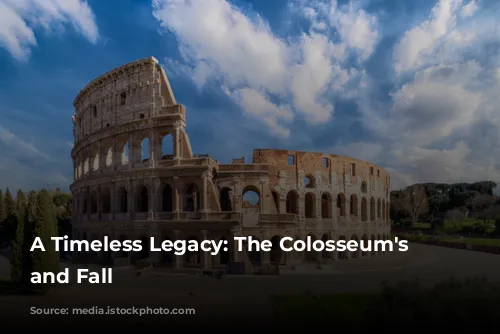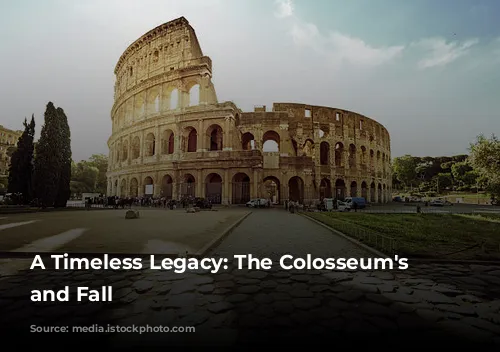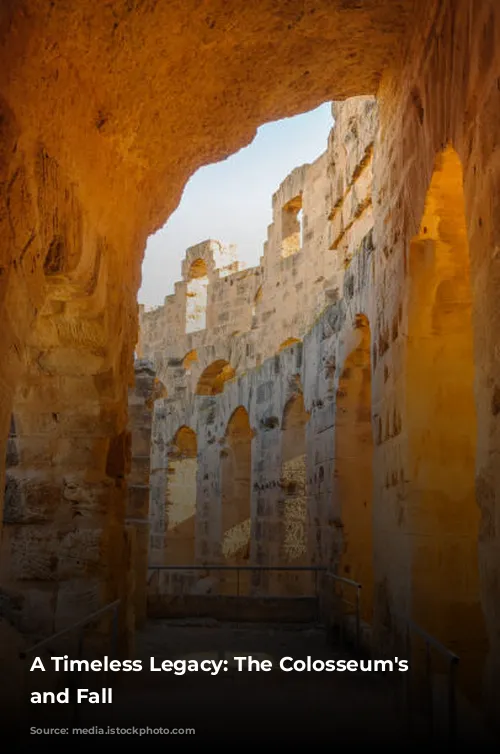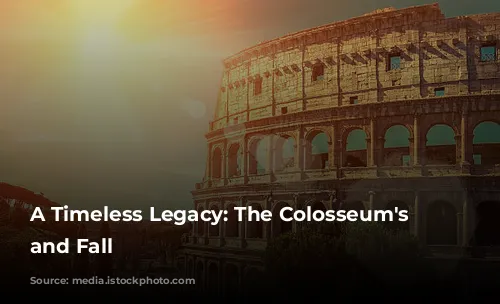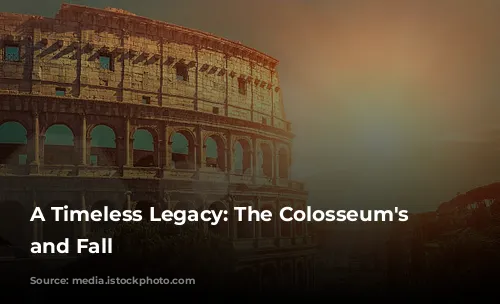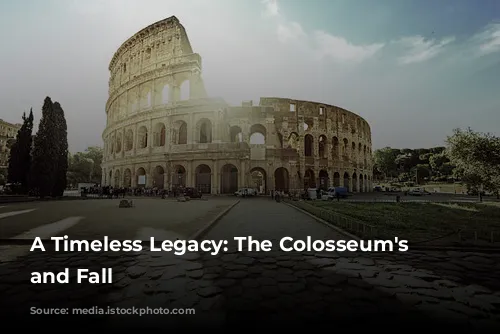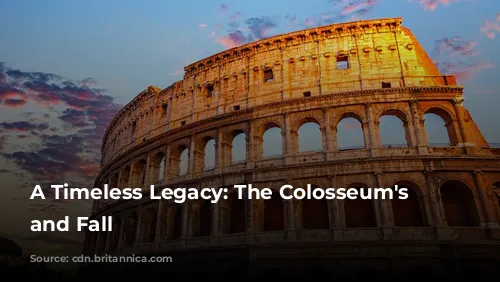Standing as a testament to the grandeur of ancient Rome, the Colosseum is one of the most recognizable monuments in the world. This majestic structure, built by the Flavian emperors, serves as a poignant reminder of the Roman Empire’s prowess in architecture and engineering.
A Symbol of Imperial Power
The Colosseum’s construction began under the reign of Emperor Vespasian, between 70 and 72 CE. This grand undertaking was a strategic move to revitalize Rome, following the tumultuous year of the four emperors in 69 CE.
Vespasian, seeking to solidify his rule and inspire awe among his subjects, decided to replace Nero’s extravagant Golden House with a colossal public amphitheater. This public space, designed to host tens of thousands of Romans, was a calculated move to showcase the Flavian emperors’ power and generosity.
The Colosseum, a freestanding marvel of stone and concrete, was a revolutionary feat of engineering. Unlike earlier amphitheaters, which relied on hillsides for support, the Colosseum stood tall and proud, boasting a complex system of arches and vaults. Its facade, adorned with three tiers of engaged columns in the Doric, Ionic, and Corinthian orders, became a model for later architects.
The Colosseum’s construction was financed with spoils from the sack of Jerusalem, highlighting the brutal realities of the Roman Empire’s expansion. This monumental structure was built by enslaved Jewish laborers, a stark reminder of the human cost of imperial power.
Entertainment and Spectacle
The Colosseum, completed in 80 CE by Vespasian’s successor Titus, became the epicenter of gladiatorial combat and public entertainment. This vast arena, capable of seating up to 50,000 spectators, offered a thrilling spectacle for the masses.
Gladiatorial fights, animal hunts, and even mock naval battles took place within the arena’s walls, captivating the Romans with their violence and grandeur. The Colosseum’s massive retractable awning, known as the velarium, provided shade for the spectators, ensuring their comfort during these events.
While the Colosseum’s role in the martyrdom of early Christians remains unclear, its association with the Roman Empire’s brutal practices has solidified its place in history.
A Monument’s Decline and Rebirth
After the fall of the Western Roman Empire, the Colosseum fell into a state of disrepair. The arena, once a symbol of imperial power, became a victim of neglect and misuse. It was repurposed as a fortress, then as a quarry, its grandeur slowly fading into oblivion.
Over a thousand years of neglect left the Colosseum in ruins, its marble seats and decorative elements stripped away. The Colosseum, once a testament to Rome’s glory, stood as a poignant reminder of the empire’s decline.
However, the Colosseum’s story is not one of complete decay. In the 19th century, preservation efforts began, led by Pope Pius VIII. This marked the beginning of a long and arduous process to restore the Colosseum to its former glory.
In the 1990s, a major restoration project was launched, bringing the Colosseum back to life. Today, the Colosseum stands as a vibrant testament to the enduring power of art and architecture.
The Colosseum, a symbol of both Rome’s grandeur and its decline, continues to attract millions of visitors annually. This timeless monument, a reminder of the ancient world’s brilliance and its fragility, serves as a powerful reminder of history’s enduring legacy.
